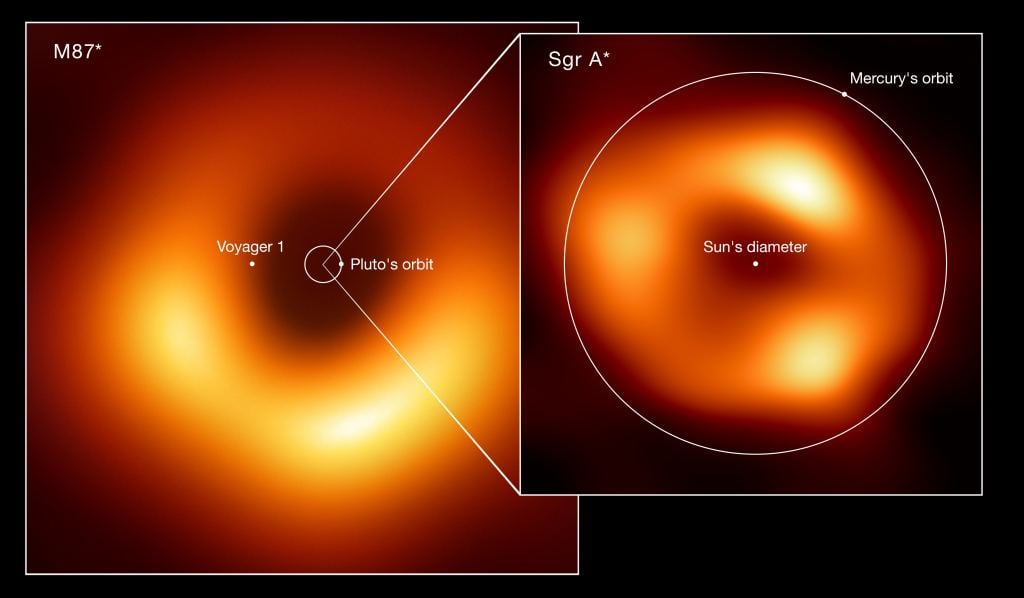Telescopes have come a long way in a little over four hundred years! It was 1608 that Dutch spectacle maker Hans Lippershey who was said to be working with a case of myopia and, in working with lenses discovered the magnifying powers if arranged in certain configurations. Now, centuries on and we have many different telescope designs and even telescopes in orbit but none are more incredible than the Event Horizon Telescope (EHT). Images las year revealed the supermassive black hole at the centre of our Galaxy and around M87 but now a team of astronomers have explored the potential of an even more powerful system the Next Generation EHT (ngEHT).
There is no doubt that our understanding of the processes within our Universe have come on leaps and bounds since the invention of the telescope. The resolution of these space piercing instruments is dictated by the telescope's aperture. The technique known as interferometry hooks individual telescopes together and combines their signal so they act as one BIG telescope, boosting the resolution.
Telescopes like the EHT have been using interferometry to great advantage to study black holes. These enigmatic and mysterious stellar corpses defy our probing; we do not fully understand their origins and processes and indeed our laws of physics break down if you get too close to the point source in the centre, the singularity. Due to their interaction with space and time, understanding the full nature of black holes will - hopefully - unlock our understanding of the Universe.
Previously, observations have only revealed the movement of stars around galactic centre suggesting an object was lurking there weighing in at around 4 million times the mass of the Sun. Data from the EHT collected during 2022, finally revealed an image of the object at the centre - SgrA* - a super massive black hole and the matter in the immediate vicinity of the event horizon. Whilst this image did not reveal the black hole itself - another article required to explain that - it certainly revealed the telltale signs.
A recently published paper explores the possibilities of the ngEHT and how they might be able to unpick some of the physics around black holes. The ngEHT will increase the geographical footprint of EHT by 10 further instruments that span across the Earth. Making use of the significant improvement in resolution, the ngEHT will also improve image dynamics range, provide a multi-wavelength capability and facilitate long term monitoring.
The team conclude that future enhancements in measurement sensitivity and data analysis techniques in ngEHT will substantially advance our understanding of black holes and the immediate environments surrounding them with particular focus on the photon ring, mass and spin analysis, binary supermassive black holes and more besides.
Source : Fundamental Physics Opportunities with the Next-Generation Event Horizon Telescope
 Universe Today
Universe Today

